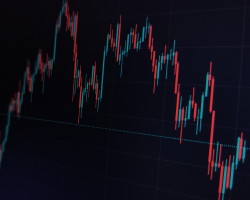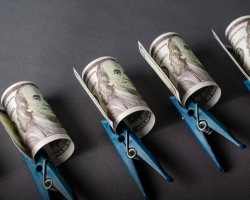How to Master Money Management Trading

In the world of trading, mastering money management is crucial for long-term success. Effective money management strategies help traders mitigate risk, protect their capital, and enhance their potential for profitable outcomes. Regardless of your trading style or market of choice, proper money management can mean the difference between consistent gains and substantial losses.
This article aims to provide you with a comprehensive understanding of money management in trading. We will explore key principles, strategies, tools, and common mistakes to avoid. By the end of this guide, you will be equipped with the knowledge and skills to implement effective money management practices in your trading activities.
Understanding Money Management
Money management in trading encompasses a range of practices and strategies aimed at controlling risk and preserving capital. It is fundamental to successful trading, irrespective of account size or trading style.
At its core, money management involves determining how much capital to allocate to each trade, how to distribute capital across different assets, and how to safeguard against significant losses. The overarching objective is to ensure that traders can weather market fluctuations and sustain profitability over time.
Effective money management is essential for several reasons. Firstly, it enables risk control by establishing limits on the amount of capital exposed to any single trade, shielding traders from catastrophic losses. Additionally, it ensures capital preservation, allowing traders to maintain enough capital to continue trading even after experiencing a series of losses. Lastly, it promotes consistent performance by avoiding substantial drawdowns, enhancing traders' ability to recover from setbacks.
However, there are common misconceptions surrounding money management. Contrary to popular belief, money management is pertinent to traders of all sizes, not just those with substantial accounts. While some advanced techniques exist, the fundamental principles of money management are straightforward and accessible to all traders. Effective money management does not guarantee profits; rather, it mitigates risk and improves the likelihood of long-term success.
Understanding these principles lays the groundwork for exploring specific strategies and techniques to master money management in trading.

Key Principles of Money Management
- Risk Management
Risk management is the cornerstone of effective money management in trading. It involves assessing and mitigating the potential losses associated with each trade. One essential aspect of risk management is determining the amount of capital to risk on each trade, often referred to as the risk per trade. By defining a predetermined percentage or monetary value that traders are willing to risk on a single trade, they can protect their capital from excessive losses.
Setting Stop Loss orders is another critical component of risk management. These orders specify the price level at which a trade will automatically be exited to limit losses. Stop Loss orders help traders maintain discipline and prevent emotions from influencing their trading decisions during adverse market conditions.
- Position Sizing
Position sizing refers to the process of determining the size of each trade based on risk parameters and account size. It involves calculating the number of shares or contracts to trade to align with predefined risk tolerances. Proper position sizing ensures that traders do not expose too much of their capital to any single trade, thereby minimizing the impact of potential losses on their overall account.
The size of each position directly affects both risk and return. Larger positions amplify both potential gains and losses, while smaller positions reduce risk but also limit potential profits. Finding the right balance is crucial for achieving optimal risk-adjusted returns.
- Diversification
Diversification involves spreading trading capital across multiple assets or markets to reduce the impact of individual market movements on overall portfolio performance. By diversifying their trading portfolio, traders can lower their overall risk exposure and potentially improve risk-adjusted returns.
Effective diversification entails selecting assets with low correlations to one another, meaning they do not move in tandem. This ensures that losses in one asset or market are offset by gains in others, providing a more stable and consistent performance over time. Additionally, diversification allows traders to capitalize on opportunities in various sectors or asset classes, enhancing the potential for overall portfolio growth.
Developing a Money Management Strategy
To achieve success in trading, it's crucial to develop a robust money management strategy. Here's how you can go about it:
Setting Financial Goals
Begin by defining your financial goals, both short-term and long-term. These goals should be specific, measurable, achievable, relevant, and time-bound (SMART). Whether you aim for consistent monthly income or long-term wealth accumulation, having clear objectives will guide your trading decisions.
Creating a Trading Plan
A trading plan outlines your approach to trading, including entry and exit strategies, risk management rules, and trading preferences. Components of a trading plan may include:
- Entry and exit criteria based on technical or fundamental analysis.
- Risk management rules, such as position sizing and Stop Loss placement.
- Preferred trading instruments, time frames, and trading sessions.
- Criteria for trade selection, such as volatility or liquidity requirements.
Integrate money management principles into your trading plan to ensure consistency and discipline in your approach.
Risk-Reward Ratio
Understanding the risk-reward ratio is vital for managing trades effectively. This ratio compares the potential reward of a trade to its associated risk. A favorable risk-reward ratio ensures that potential profits outweigh potential losses, providing a statistical edge over time. Incorporate risk-reward analysis into your trading decisions to assess trade viability and optimize trade outcomes.

Tools and Techniques for Money Management
Trading Journals
Keeping a trading journal is invaluable for tracking and analyzing your trading performance. Benefits of maintaining a trading journal include:
- Identifying strengths and weaknesses in your trading approach.
- Tracking progress towards your financial goals.
- Reviewing past trades to learn from successes and failures.
Include details such as entry and exit points, trade rationale, and emotional state to gain insights into your trading behavior.
Software and Apps
Several software and apps are available to assist traders in managing trades and risks effectively. When selecting money management tools, consider features such as:
- Trade tracking and analysis capabilities.
- Risk management tools, including position sizing calculators and risk-reward calculators.
- Compatibility with your trading platform and devices.
Choose tools that align with your trading style and objectives to streamline your trading process and enhance decision-making.
Analytical Methods
Utilize both technical and fundamental analysis to inform your trading decisions and enhance money management practices. Technical analysis involves studying price charts and patterns to identify potential trade opportunities and manage risk. Fundamental analysis focuses on assessing economic indicators, company financials, and market sentiment to anticipate market movements and adjust trading strategies accordingly. Integrating these analytical methods into your money management strategy provides a comprehensive approach to trading and improves decision-making accuracy.
Common Money Management Mistakes to Avoid
Navigating the financial markets demands prudent money management to sidestep prevalent pitfalls that can erode trading success:
- Over-leveraging
Many traders fall prey to the allure of leveraging their positions excessively, hoping to magnify profits. However, this strategy also escalates potential losses, leaving portfolios vulnerable to significant drawdowns or margin calls.
- Ignoring Stop Loss Orders
Disregarding the implementation of Stop Loss orders is akin to sailing without a compass. These orders serve as crucial safeguards against catastrophic losses by automatically exiting trades at predetermined levels, shielding capital from unrestrained downturns.
- Chasing Losses
Human psychology often incites traders to chase losses, endeavoring to recoup dwindled funds through impulsive, emotionally-driven trades. Yet, this behavior typically exacerbates losses and disrupts rational decision-making, leading to further financial harm.
- Overtrading
The temptation to trade frequently, driven by a quest for excitement or a desire to offset losses, can result in overtrading. This phenomenon not only depletes capital through excessive transaction costs but also heightens the risk of poor-quality trades and diminished profitability.

Continuous Learning and Improvement
To thrive amidst the ever-evolving landscape of trading, adopt an ethos of perpetual learning and growth:
- Importance of Ongoing Education
Recognize the paramount importance of continual education in refining trading skills and adapting to dynamic market conditions. Engage with diverse learning resources, including books, online courses, webinars, and mentorship programs, to fortify your knowledge base.
- Resources for Learning More
Explore a plethora of reputable resources available for traders seeking to deepen their understanding of money management and trading strategies. From financial websites and trading forums to educational platforms and market analysis tools, a wealth of information awaits those committed to continuous improvement.
- Adapting and Improving Your Strategy Over Time
Remain agile in your approach to trading, embracing adaptability as a cornerstone of success. Regularly assess and refine your trading strategy in response to shifting market dynamics, personal experiences, and feedback from peers or mentors.
Conclusion
Effective money management stands as a linchpin of sustained success in trading endeavors. By sidestepping common pitfalls and embracing a culture of continual learning and refinement, traders can safeguard their capital and optimize profitability:
From setting clear financial goals and crafting robust trading plans to implementing stringent risk management protocols, mastering money management entails a holistic approach to portfolio management and decision-making.
Embrace the journey of mastering money management as a perpetual voyage of self-discovery and improvement. With unwavering dedication, disciplined execution, and an insatiable thirst for knowledge, traders can navigate the complexities of financial markets with poise and resilience.
Seize the opportunity to integrate proven money management principles into your trading regimen, recognizing that each challenge is an invitation for growth. Embrace setbacks as invaluable learning experiences, and persist in your pursuit of trading excellence with unwavering resolve.
FAQs
What is money management in trading?
Money management in trading refers to the strategic allocation and protection of capital to optimize risk-adjusted returns. It encompasses techniques and principles aimed at preserving trading capital while maximizing profit potential.
Why is money management important in trading?
Effective money management is vital in trading to mitigate losses, preserve capital during adverse market conditions, and foster sustainable long-term profitability. It serves as a safeguard against reckless trading behavior and helps traders navigate the inherent uncertainties of financial markets.
How can I determine my risk per trade?
Risk per trade is typically calculated as a percentage of your trading capital that you are willing to risk on any single trade. A common approach is to allocate a fixed percentage of your total capital, such as 1% or 2%, to each trade. This ensures consistent risk management and protects against excessive drawdowns.
What are Stop Loss orders, and why are they important?
Stop Loss orders are predetermined price levels at which traders exit losing positions to limit potential losses. They are crucial risk management tools that help protect trading capital by automatically closing out trades when prices move against expectations, preventing further losses beyond predefined thresholds.
How do I diversify my trading portfolio effectively?
Effective portfolio diversification involves spreading investments across different asset classes, markets, and trading strategies to reduce overall risk exposure. This can include trading multiple instruments, such as stocks, forex, commodities, and cryptocurrencies, as well as employing various trading techniques and time frames.
What is a trading plan, and why do I need one?
A trading plan is a comprehensive document outlining your trading objectives, strategies, risk management rules, and guidelines for trade execution. It serves as a roadmap for consistent and disciplined trading, helping to minimize emotional decision-making and enhance overall trading performance.
How can I improve my risk-reward ratio in trading?
Improving your risk-reward ratio involves seeking trades with favorable reward-to-risk ratios, where potential profits outweigh potential losses. This can be achieved by identifying high-probability trading setups with clear entry and exit points, using effective risk management techniques, and avoiding trades with unfavorable risk-reward profiles.
What are some common mistakes to avoid in money management?
Common money management mistakes to avoid include over-leveraging, ignoring Stop Loss orders, chasing losses, and overtrading. These behaviors can lead to significant capital erosion and undermine trading success in the long run.
How can I continue learning and improving my money management skills?
Continual learning and improvement in money management skills can be achieved through a variety of resources, including books, online courses, webinars, trading forums, and mentorship programs. Engaging with these resources and actively seeking feedback and guidance from experienced traders can accelerate your learning curve and enhance your trading proficiency.
About AdroFx
Established in 2018, AdroFx is known for its high technology and its ability to deliver high-quality brokerage services in more than 200 countries around the world. AdroFx makes every effort to keep its customers satisfied and to meet all the trading needs of any trader. With the five types of trading accounts, we have all it takes to fit any traders` needs and styles. The company provides access to 115+ trading instruments, including currencies, metals, stocks, and cryptocurrencies, which make it possible to make the most out of trading on the financial markets. Considering all the above, AdroFx is the perfect variant for anyone who doesn't settle for less than the best.










